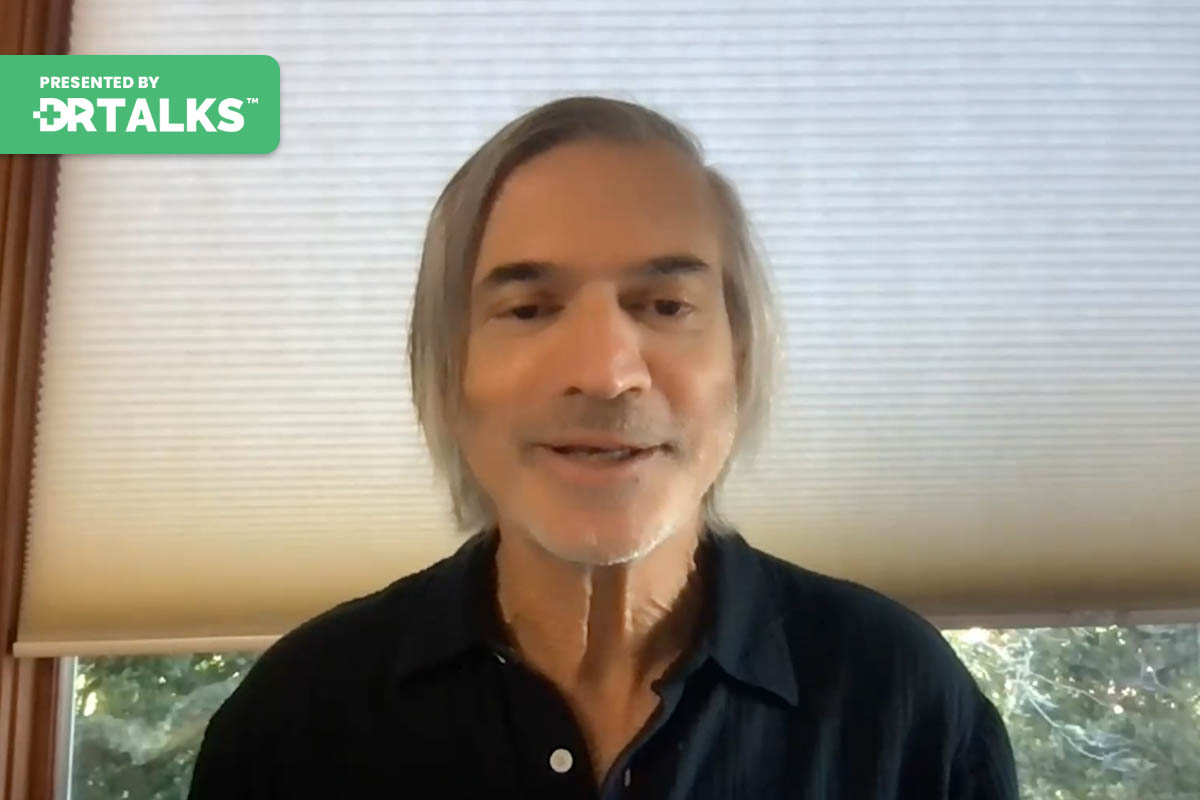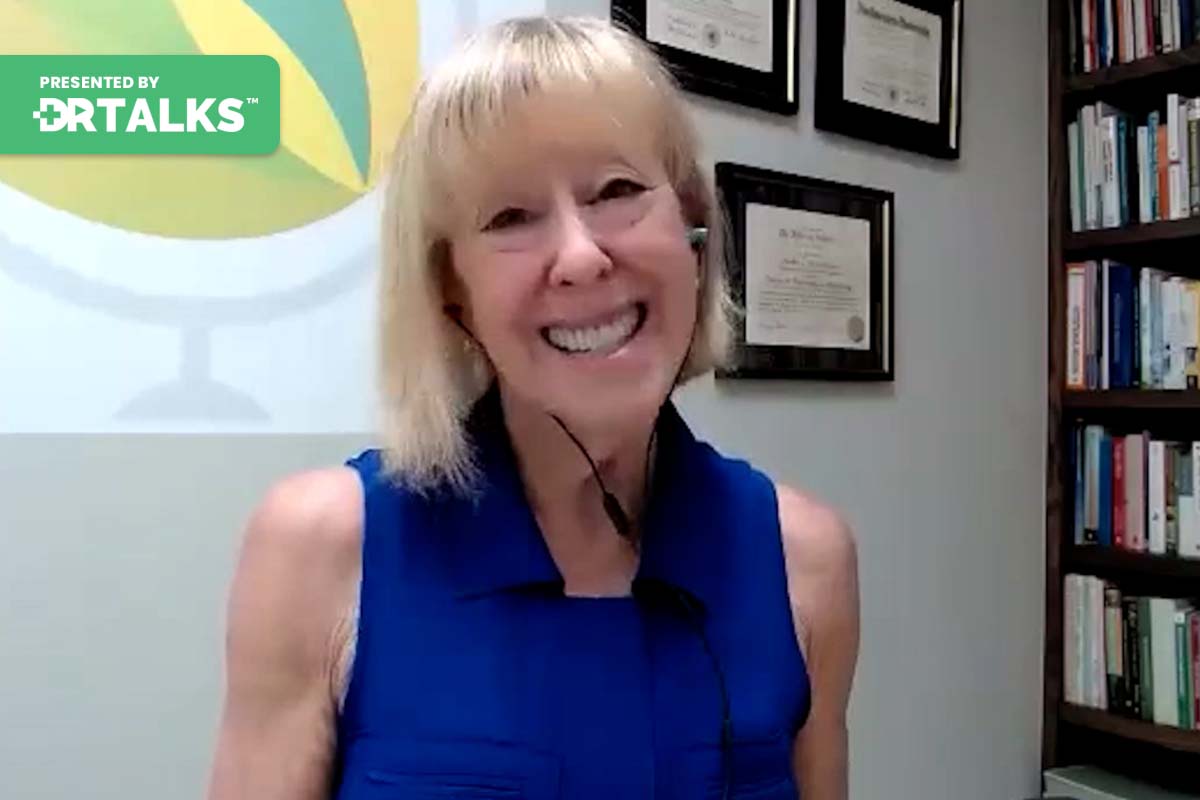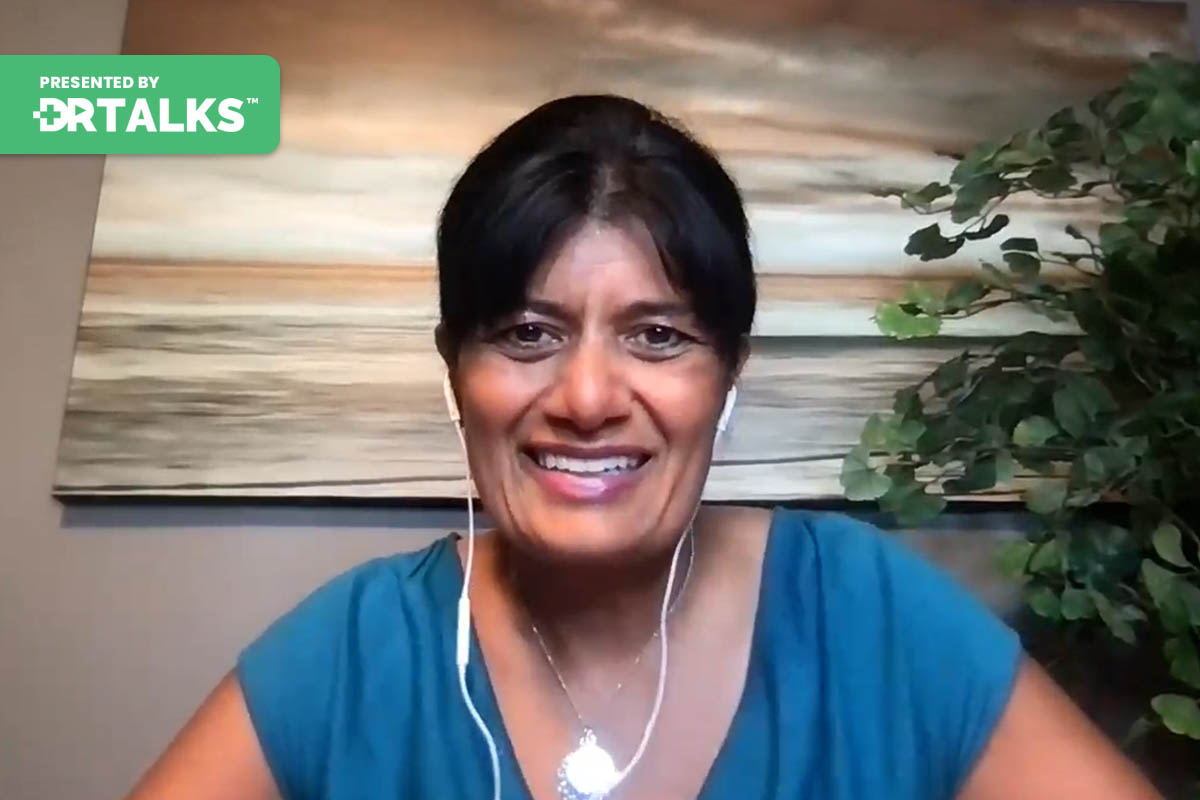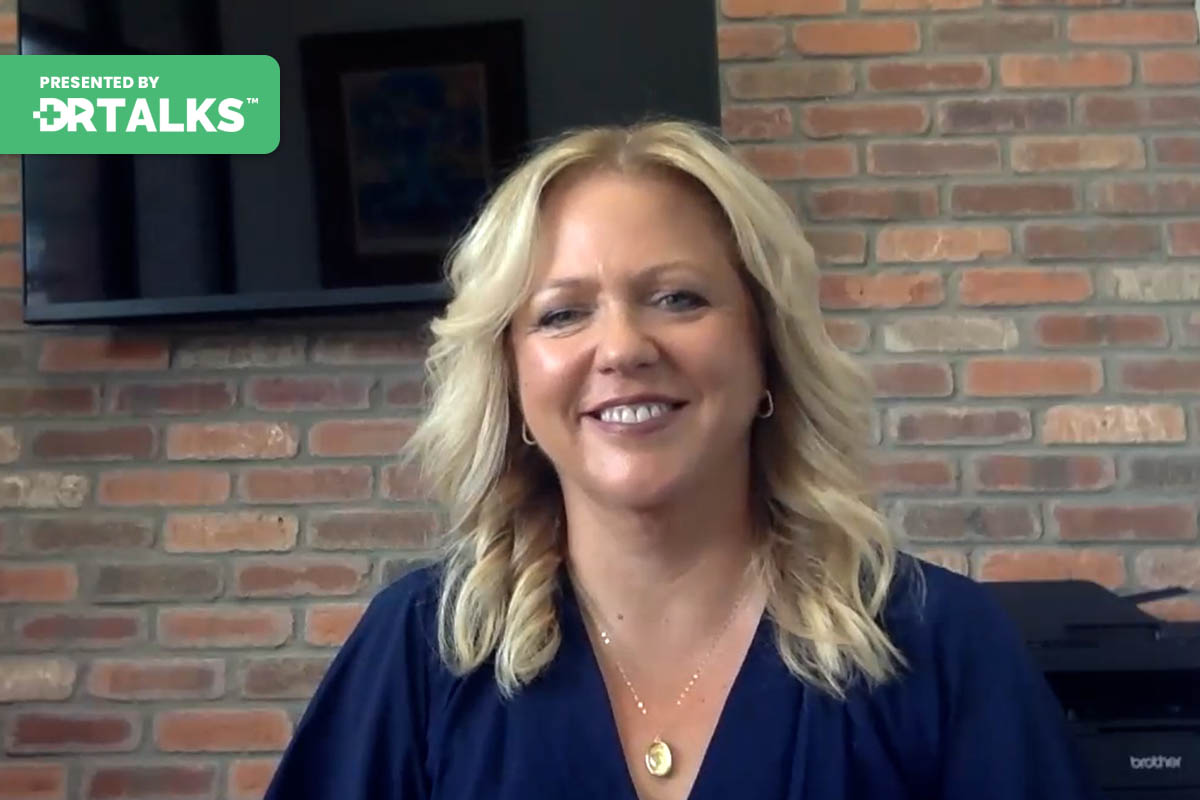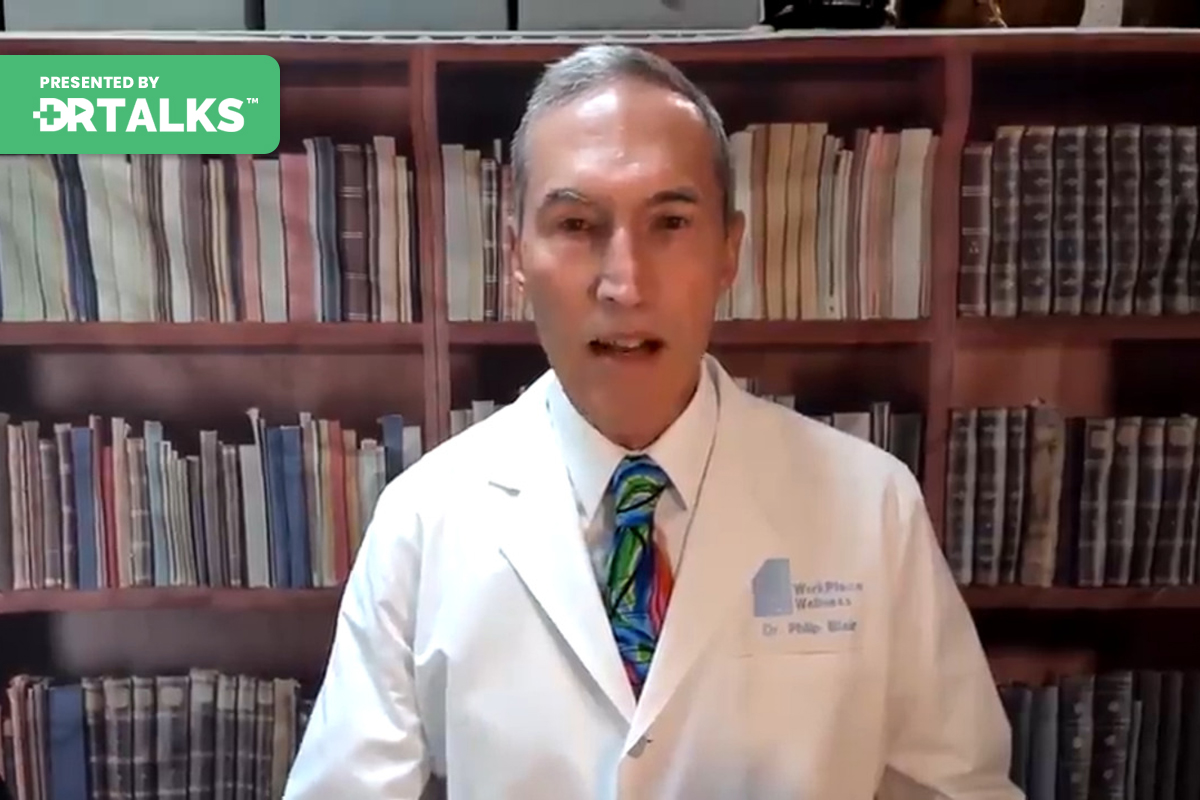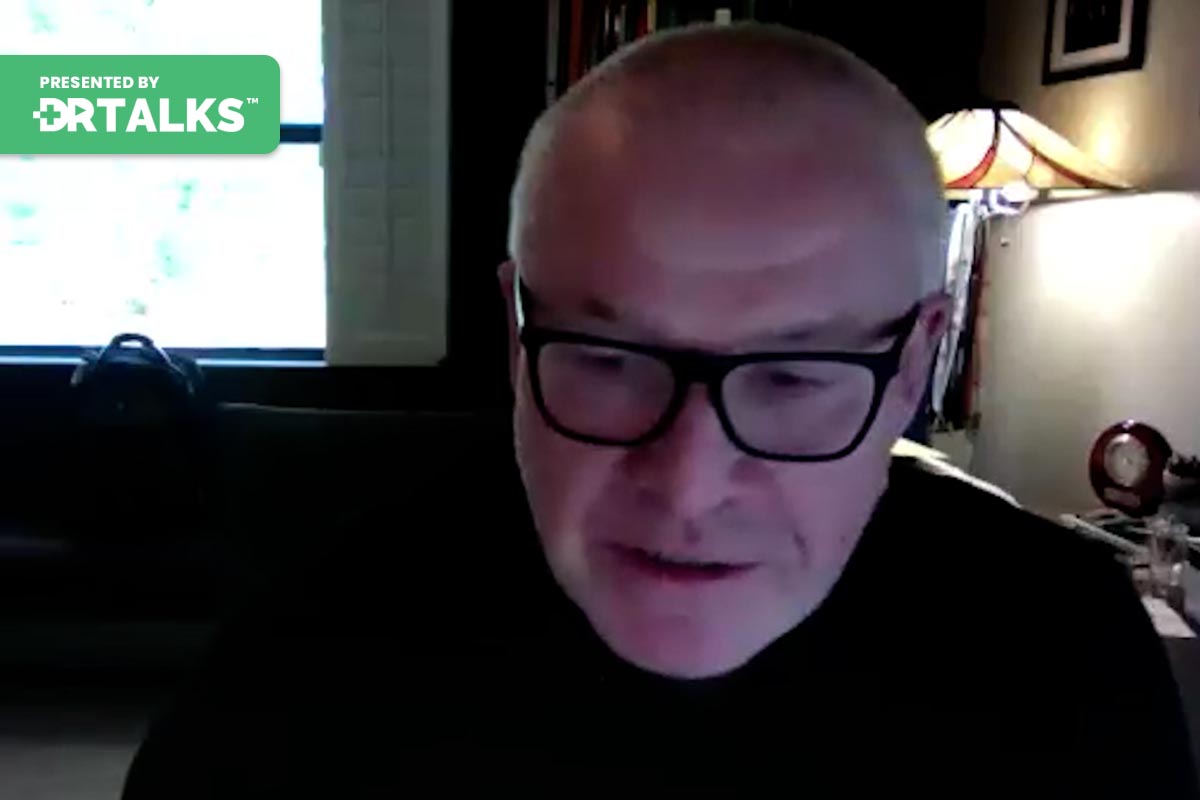Join the discussion below
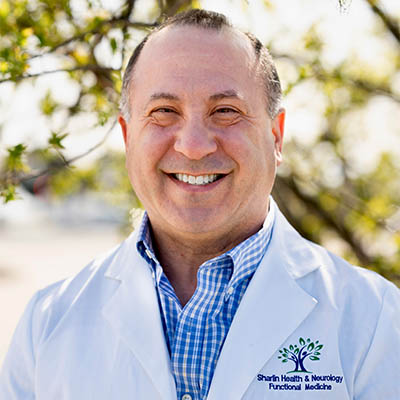
Kenneth Sharlin, MD, MPH, IFMCP
Kenneth Sharlin, MD, MPH, IFMCP, is a board-certified neurologist, consultant, functional medicine practitioner, Assistant Clinical Professor, researcher, author, and speaker. His medical degrees are from Emory University, The University of Virginia, and Vanderbilt University. His functional medicine certification is through The Institute for Functional Medicine. He is author of the... Read More
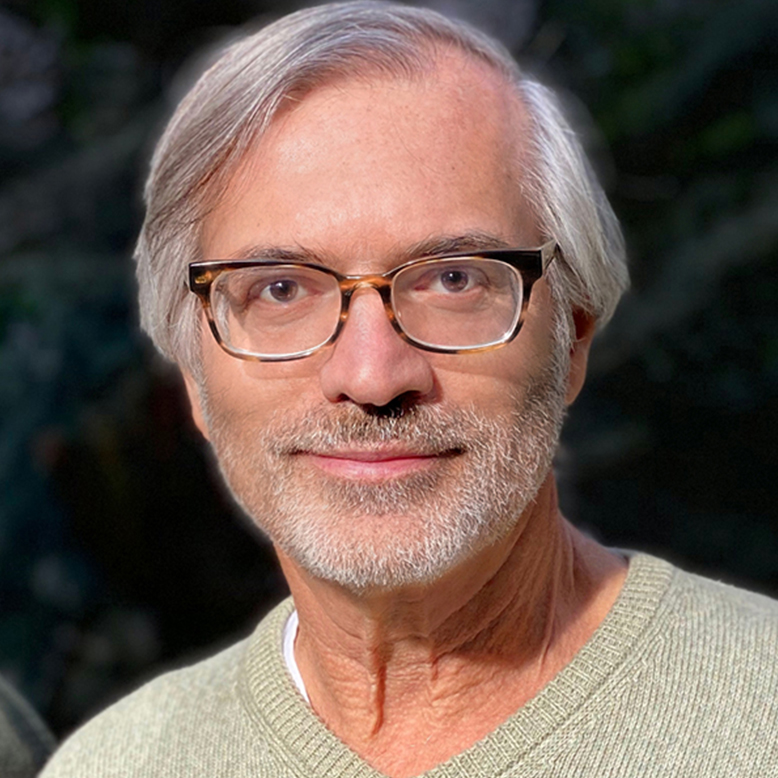
Eric Gordon, MD is President of Gordon Medical Research Center and clinical director of Gordon Medical Associates which specializes in complex chronic illness. In addition to being in clinical practice for over 40 years, Dr. Gordon is engaged in clinical research focused on bringing together leading international medical researchers and... Read More
- Learn the link between chronic inflammation and various chronic illnesses
- Understand the Cell Danger Response and its significance in healing
- Discover the role of toxins and chronic infections in triggering diseases, including Parkinson’s
- This video is part of The Parkinson’s Solutions Summit
Kenneth Sharlin, MD
Hello, I’m Dr. Ken Sharlin. Welcome to the Parkinson’s Solutions Summit. I am very honored today to introduce my guest, Dr. Eric Gordon. He is the clinical director of Gordon Medical Associates. We’re going to have a great conversation today about understanding chronic diseases, particularly Parkinson’s disease. Talking about some cutting-edge theories and how those theories can be applied to solutions in your life. Welcome, Dr. Gordon.
Eric D. Gordon, MD
Thank you, Dr. Sharlin. It’s a pleasure to be here. It’s an honor to be interviewed by a neurologist about anything in the field of Parkinson’s and these chronic illnesses. I consider my approach to Parkinson’s to be just like every other chronic illness that we treat: looking at underlying causes. Many people talk about that. But from the perspective of chronic inflammation, this is an area that’s dear to my heart. I have been in the field of, I’d say, starting with chronic fatigue. In the nineties, I had done hospital medicine for about 12 years and was so interested in people that didn’t make sense. All the people that we saw were kind of wink, wink, nod, nod—they’re nice people, but this doesn’t make sense. Their blood counts are normal, their chemistries are normal, and they’re fatigued. Their guts are in a state of disarray. But they’re walking and talking. So, they’re not too bad. and so that has been my passion: understanding what’s going on. with people who look well and don’t have a diagnosis of cancer, but yet they’re still sick. Over the years, the autoimmune diseases, which I figured I consider all the neurologic diseases subsets of autoimmune diseases on some level, have intrigued me because that’s where this is happening where people look well. And now we have tests that say, “Oh, you have X disease,” but it doesn’t guide therapy that much. That’s what we come to. How do we look at this? How do we understand chronic illness in a different light?
Kenneth Sharlin, MD
You’re so true. It had an instructor who taught me at the Institute for Functional Medicine. He has a clinic called the Third Opinion, and that’s a great name for his clinic because isn’t it so true that there are folks who suffer from a variety of symptoms that, in the traditional paradigm of medicine, we struggle to identify what’s going on with them? You and I probably don’t, but the traditionally trained doctor often does, or they get a diagnosis that’s a little less described only because, as the paradigm is, well, once we make the diagnosis, we can give you a drug. Until we do that, then we just can’t help you. It’s often the same drug; it’s gabapentin or whatever. But it doesn’t make sense because I went to Emory Medical School, which is a very respected medical school. I was honored to be a graduate. But how many hours? There’s that classic thing about how many hours are spent on nutrition alone. But I would say how many hours were spent teaching us about the work of Hans Selye and the general adaptation syndrome. That’s so important to understanding the influence of stress on our biology, where Walter Cannon, the one who coined the term homeostasis, has lectured on chronic inflammation and what thrives there. Because that’s about how we get sick, isn’t it?
Eric D. Gordon, MD
Yes, chronic inflammation is the answer because this goes back to a concept that this fellow Dr. Robert Naviaux developed, built on the eye of many people’s ideas, which is the cell danger response, which is the idea that our self-protection is what is at the root of many and probably all chronic illnesses. After all, inflammation is our body’s response to acute events. That’s how we protect ourselves; that’s how we get rid of viruses and bacteria. That’s also how we just heal because survival is based on healing from minor traumas or major traumas. without, with, and at once. What happened in medicine is that in the last few hundred years, we have gotten better and better at helping people survive acute events of major trauma. then, in the last hundred years, we’ve come a long way, or 80 percent, in surviving acute infections. Those were the things that took people down up until the last 120 years. You died from a traumatic injury or an infection. This idea of chronic diseases—diabetes, heart disease, all the neurologic diseases—was fairly rare, and it wasn’t because people died young. That’s one of those stories that medicine has sold to the world to tell them how great we are. We have done a phenomenal job. There’s no question that, if you have any kind of injury or acute infection, what medicine does is lifesaving, amazing, and just miraculous. But that being said, we’ve made people think we’re even better because we talk about, like, the median, the life span being 40 years old or something, and like, for the last thousand years, lots of people lived into their seventies and eighties, just not the vast majority, but lots. They didn’t die. Not many of them had diabetes or coronary artery disease because these things were recognized. They’re not like we didn’t know the doctors in the 17th and 18th centuries, or even before they recognized these illnesses. But sure, they didn’t happen much. What changed is our environment, so what we have today and the reason we have this issue of chronic inflammation is our self-defense system, which, in that sense, Dr. Naviaux, I call, and people might be upset about this, but to me, everything in science and medicine is stored. When you build a bridge, you’ve got science, and everybody’s going to agree. Everybody who knows math can agree on things like what the structure has to look like and what forces it has to understand within limits. But when it comes to understanding how the body works and how biology works, we have some strong knowledge and then a lot of stories tying together discrete facts. In medicine, those facts change daily. That’s why we have what we have, and this is frustrating because many people want it, and I can’t blame them; it’s their lives. They want the diagnosis. They want to know for certain what’s going on. anyway, so.
Kenneth Sharlin, MD
This is a narrative in and of itself. This idea of narrative medicine is so important. It goes back to Arthur Kleinman and the illness narrative. But to your point about science in bridges, there was someone who said, I have a dream of building this magnificent bridge across San Francisco Bay. It took that vision and that dream to put things into action. These narratives that are powerful and that build our country’s infrastructure are, in many respects, the same narratives that give people solutions for healing because they have to have something to wrap their heads around to take the action steps to improve their outcome.
Eric D. Gordon, MD
What I’d like people to understand, though, is that the story or the science that you learned today about how the body works may not be the one you learn tomorrow. I remember when we first started looking at DNA, we had all this junk DNA. We didn’t know that. How important all these parts of your genome that didn’t code for proteins were, so they keep coming up against that, that there are stories we make today about how the body works that turn out to be only partial truths, as is said in engineering. Yes, we learned more things, but still, the basics, like Newtonian physics, do seem to apply where Newtonian physics applies in the body. But we just don’t understand the system that it’s working in. That’s why I leave hope, because sometimes when people go to doctors or get a diagnosis and it sounds like it’s a this is it when it comes to chronic illness, I go back again to crime because people have to understand that when you go to the doctor and find out that you have bronchitis, or pneumonia, or something like that, or gastroenteritis, those are acute illnesses. You got it; your immune system was down; you got exposed to a bug; something happened. You either take medicine or not, but you recover, and then you generally go back to being where you were. that, an acute event, even. Maybe you’re not 100%, but you’re 90 to 98% back to normal after a chronic illness, which is what we’re talking about here with Parkinson’s as our focus. But when I say that, most autoimmune diseases are in that same category. It’s like your body got here by a thousand small steps. It wasn’t like an event. Because there are so many small steps, you are a cause of mentality, the way we like to think about things because that’s how our minds work. We like to know that A causes B and it gets difficult when it’s a thousand steps, and then maybe you take it down to 100 steps, and then maybe there’s like ten or five final, big events that put you in this disease category. But it’s a process. That’s where this concept of the cell danger response comes in: helping us understand the process so we can use our intellect and the knowledge that we have as doctors to begin to help people see what parts can be supported and what parts cannot. Maybe we can fix something. Maybe we can remove a trigger, and maybe we can support compensation. and this is all we do in regular medicine, but in regular medicine, we tend to get hung up on just what the drug company has given us, which are wonderful tools but are often limited. So when we look more widely, what I know you do in your practice is look at the lifestyle, the diet, and the stresses because those all impact our immune system’s ability to respond. But then you also look at those; there’s this rare genetic predisposition. But what we have learned, and I believe I’ve learned, is that many people have learned that the genes for chronic diseases are rarely simple. There is a small subset of Parkinson’s where there’s a familial genetic component. But you’ll correct me, but then maybe, like, 10% of Parkinson’s disease or something, or 20.
Kenneth Sharlin, MD
A very small percentage.
Eric D. Gordon, MD
A very small percentage. Most of Parkinson’s is multi multi-factorial. There’s there’s genes that are permissive because we’re all in the same chemical suit together. only some of us develop Parkinson’s disease, from this, while others might develop other autoimmune diseases. genes are different.
Kenneth Sharlin, MD
Dr. Gordon, if I may, I want to just kind of quickly summarize for folks, because you’ve laid out a lot on the table, and correct me if I’m wrong, saying that we go through life, encounter certain things, and have different experiences. Eat a certain way, sleep a certain way, or experience emotional or social stressors in a certain way. Maybe we’re exposed to certain chemicals, toxins, heavy metals, or infections in our environment. There are a whole variety of things. Head injuries: repetitive head injuries—that’s another factor. drugs, or maybe it’s general anesthesia and its effect on the brain. But each of these things is experienced by us uniquely as biochemically and biologically unique individuals, perhaps with some predisposition for a chronic disease. These are viewed as individual triggers, but they’re additive. The body that has been able to adapt, or to say up, just a little perturbation in the system, will just go back to the way we were, which is not that big of a deal. But then, finally, there is that tipping point. at that tipping point, which in turn triggers what you’re calling the cell danger response.
Eric D. Gordon, MD
Well, yes, it is. But the steps along the way are the cell danger response because, when you get the first injury, I like taking that first viral infection, minor; it’s just that the first step is that you create a lot of local inflammation or that cell that’s in the mitochondria in that cell sense that they’re not getting enough resources. So the mitochondria in that cell, which normally we think of as the energy-producing part of the cell, is also a sensor. When it senses that it’s not getting enough nutrients, it sends an inflammatory signal. The ATP that it normally makes goes to the cell surface, which means that instead of using it as a storage unit for energy, it becomes a signaling molecule, that signals inflammation. Then you get your first part of your immune system, which comes in and cleans up the mess. But once you’ve cleaned up the infected cell, you have to rebuild new tissue. This is happening even at the first step when you have problems with diseases like chronic illnesses. These steps haven’t stopped in some of your organs. You have cells that are still sending out chronic inflammatory signals. There’s a problem here. My problem may be gone, but that cell is stuck in a place where A. It’s not producing enough energy and B. It’s sending off this inflammatory signal. With the inflammatory signal, does it affect your immune system? If you keep calling, and this is CDR1, but if you keep calling the immune system after a while, has to modify how it responds to not hurt you. your T cells and your B cells, which COVID has given almost most of us a lesson in T cells and B cells. But these are your acquired immune systems. These are the parts of the immune system that tend to learn. These guys have very good dance steps and a repertoire of many responses to each other. The T cell says this, the T cell does that, and then subsets of T cells do different things. It’s a very complex dance. Okay. But if you keep making them do that same dance over and over again, yes, the flex city changes and this means some of those characters get tired and drop out, and then you wind up with an imbalanced immune response. When you’re healthy and you get an infection, your immune system comes in hard. It’s hard, and then the game is over. I said, I don’t want to keep mixing metaphors, but the simplest way to think about this is anger. Then an immune cell that knows that there’s a virus gets angry. That’s it. If you get angry for a minute, that is communication. You let somebody else know that what they did was upsetting to you. Please don’t do that again. However, if you remain angry, you will become less and less useful as a whole; an angry person is not someone who runs an organization or a household.
Because everybody around you starts to act differently. That’s the same thing that happens in the body. That inflamed cell is making everything around it act a little differently. that sets you up for chronic illness. Now, that’s CDR1, the angry cell. CDR2 is after you’ve dealt with that infection, that virus. Now that you’ve lost some cells, you have to rebuild, and that’s CDR2 again. It’s nice that you’re a productive person, but if you never stop working, you become an annoying person. It’s the same thing in the body. You’ve got to start getting scar tissue, tumors, or just diseases of excess like atherosclerosis and so on. The third is that that cell after it rebuilds, has to learn to communicate. It has to get its cell membrane, and when it’s in that stage of wanting to, it is not communicating with the other cells as well. The cell membrane is a little hardened. In the third stage, it’s beginning to get all those receptors working, letting the thyroid hormone, the adrenal hormone, and all those hormones messages and the messages they send to the cells next door flow. So the cell becomes educated. It’s now a functioning member of its community. That’s right, a step—any stage, any step along the way—gets stuck in the cells, and it’s like you’ve got a thousand cells in your liver stuck in CDR1; it’s not a big deal. You’ve probably got, I don’t know, at least a trillion cells in your liver. You can see you have a few stuck somewhere. But if those numbers start going up, they start producing enough noise and misinformation that the body stays inflamed. The beauty of this system is that we can have so much happening. That’s where people have to understand that we are allowed to have lots of sins.
Kenneth Sharlin, MD
That the resilience.
Eric D. Gordon, MD
If we have a ton of mail, the problem with aging is that we lose our resilience because, yes, we’ve got lots of cells that are now not working well. They’re stuck in one of these phases. They haven’t been able to mature completely. They mature completely in the middle. You are around them. That is why the issue of toxicity, which a hundred years ago was just becoming an issue, is now such a big one. Because our bodies are now swimming in a soup of toxic chemicals—all chemicals they haven’t seen. They’re not, and they’re not able to handle it. So all this idea of the cell danger response is, again, a story. It’s a way we can frame and understand disease. It’s not something that the average person needs to know in detail. Doctors need to begin to think that way because they can understand the process better and may have different ideas of interaction. But the important thing for people to understand is the complexity of the system and realize that, on the other hand, it’s super complex. We can’t fix each little detail, but if we can do things, that’s with lifestyle medicine, which is not going to cure everybody, but it’s kind of the basis that allows people to heal. That’s where people think I’m changing subjects, but it is dear to my heart. People often get disappointed because they clean up their diet and sleep better, and suddenly I’m not well. The reality is that knowing that will get you well if you’ve been sick for, maybe, three months, but if you now have a chronic illness, that’s just the promise. If that’s the first step,
Kenneth Sharlin, MD
Foundation, though, doesn’t have to happen. Yes, Mark Hyman and some of those folks use this analogy: if you’ve got a bucket of dirty, muddy water and you’re just trying to pour clean water and expecting all the water in the bucket to be clear and clean, it’s probably not going to happen. When we want to use more of these targeted therapies, that’s great. But we still have to create that environment for those therapies to be effective.
Eric D. Gordon, MD
Yes. an understanding that there are it’s like looking down levels because in medicine, myself included, we all grew up with the miracle moments, the moment in the emergency room when someone’s short of breath and you give them intravenous medicine that makes them pay a lot. Suddenly, they can breathe. You go. “Oh, my God, I saved you.” It’s wonderful. You feel wonderful. You helped somebody. We keep looking to repeat that miracle in our careers. We want to tell people you’re sick. Here, take this. You’re better. That is what drives physicians. Then we have the issue of chronic illness, where it doesn’t work so well. But what we’ve done is tried to use the same model. In most illnesses, we give people things that will just suppress the symptoms so they’ll feel better, which is good, but we’re not getting to, okay, what are the triggers that maybe need to be removed now? Sometimes the triggers are gone, and we’re stuck in this cell danger response where your body’s in a pattern. But many times there are triggers, and that’s where having the diet clean and slowly emptying that mud from your body and slowly getting rid of those toxins will perhaps lower the triggers, looking for hidden infections. That is not a popular thing in America. But we’re beginning to rekindle the idea that, oh, we know we have a few examples, like tuberculosis, of things that last a long time. However many schools or the infectious disease society as a whole don’t like the idea of chronic infections being a big problem. We won’t go there. But just to say that many times, tick-borne infections can be an underlying trigger and irritant and something that can, again, be something like Parkinson’s. A lifetime of exposure and genetics have led to the place where, then, you get Lyme disease and you wind up with Parkinson’s symptoms because that extra inflammatory stress tripped your system over. It doesn’t mean that just because you treat the line, Parkinson’s is going to go away, because there were a lot of reasons your system decided to respond with tremors and other signs of Parkinson’s. It wasn’t like the line just caused it. You needed a setup. That’s why we can’t get the doctors to look at this fully because you can treat probably 100 people with Parkinson’s, or, quote, Lyme, and only a handful are going to respond, so in medicine, we have this idea that, like, we have to have a 70% response, and which is it? But when you’re dealing with multifactorial illnesses, we have to develop better tools so we can begin to find the factors that affect the 20% group and the 30% group. right. And to be fair, we need to develop diagnostic tools that are that sensitive because, unfortunately, in the integrative and functional community, a lot of our tests are needed. They fail in that they’re not as well validated. We haven’t tested them rigorously with a thousand or thousands of people, which needs to be done. That’s one of my things. I use these tests every day, and they’re useful. But the conventional medical world sometimes judges us a bit harshly because they don’t feel our tests are that well validated. That’s something that the community, the integrative community, needs to rise and kind of demand from the right.
Kenneth Sharlin, MD
That will come. There was an article I shared with my friend Terry Wahls yesterday about progressive multiple sclerosis, and it was just published in the journal Neurology, where they looked at the metabolites of arachidonic acid, which is a pro-inflammatory omega-6 fatty acid. Probably the main thing that, from a fatty acid perspective, drives that balance of anti-inflammatory and inflammation more towards elimination is that people with progressive MS have more metabolites of arachidonic acid in their cell membranes than people who don’t have progressive MS. We talk a lot about balancing our omegas. We put people on fish oil, usually in my clinic, at least a gram a day. That’s the minimum. It does help. The literature is supportive, not just in MS, but it’s supportive in Parkinson’s; it’s supportive in Alzheimer’s disease. To your point, is that going to be the cure, all you know? But we’re talking about complex chronic diseases. We have to be able to see all the pieces of the puzzle. Somehow, our masters are working with all of them. I envision those sci-fi movies where there’s a hologram, and the person’s doing this, moving it, and shaping it. in many respects as functional medicine doctors. That’s kind of what we do, and it’s what we ask our patients to do.
Eric D. Gordon, MD
That is the challenge and the wish that I have for medicine because so many doctors are burned out. They’re burned out because they’re being taught that the only thing they can do is what we used to call cookbook medicine. You look at pain, or you just look it up, and it says it on the page. In complex chronic illnesses, it’s a creative thought process because we’re all individuals. Our genetics are not the same, and we know our exposures are not the same. Our personalities and our responses to stress are not the same. Some of us can sit and meditate, and some of us can’t. Some of us are joyful, and some of us are sad. We have different personalities, and the question is, how do we help people orchestrate and find their strengths and support their weaknesses so they can begin to regain their health? But it takes division to say that it’s not. “Oh, you have this infection, or you have this gene.” That’s the whole story because it’s just not even looking. I tell the obvious thing, like things like sickle cell anemia and things like that, where many of the genes are the same but the expression is huge. It goes from early death to minor annoyance throughout life, depending on the rest of you.
Kenneth Sharlin, MD
Then, similar to your point about Long-Covid, putting aside the fact that there are COVID variants, the reality is that even when the first wave of COVID hit the United States, some people got a couple of sniffles, and that was about it. They said, Oh, this COVID is overblown. Other people are in the ICU, intubated, and dying, and yet it’s the same virus. Why do some people get Long-COVID and other people don’t? Well, is it the persistence of infection, or have we just reached that tipping point where that cell danger response is so hard-wired that they’re stuck in that inflammatory frozen phase and we have to work with them as integrative, holistic, functional medicine providers to say, “Okay, let’s sit down, let’s break this down, and try to identify what are all the factors that are sending these signals down to the cellular and mitochondrial level because we’re going to have to take them off your plate as best we can? One by one, we’re going to have to return the system to enough resilience that you can begin to function again.” This can happen with Parkinson’s disease. The paradigm is the same: we have to sit down and talk with the patients. Listen, which is an art of medicine that has largely been lost in traditional medicine. Listening to the patient, getting this story, identifying through some functional medicine, testing, perhaps what are the multiple triggers and mediators, and then nurturing folks through a process of removing them, correcting them, returning the balance, etc.
Eric D. Gordon, MD
The message of hope in all of this is so important because of the resilience that the human body has, and we don’t have to fix it all. That is, the body is a self-healing mechanism, and many times, if you can just begin to lower the noise and have fewer angry people in the room, then suddenly things start to work. It’s just like, I tell people, it’s a miracle that we survive all over the world in different societies, that somehow most of us have some food and some will drink, and we have cared for each other. We have all this stuff. If you think that when you look at the bad things, you can go, “Oh, my God, it’s hopeless.” But somehow, over the eons, we keep surviving, and the same thing in our bodies is that, yes, you can have messed-up areas, but somehow the miracle of life is that we continue to compensate. If you just take away some bad things, good things will come back, which is right. It’s looking at the forest. It’s just a miracle. And we’re here. The beauty of medicine is the ability to share the joy of healing in life with other people. Yes, and as we keep saying, no, I just feel bad for so many doctors who are in that seven-minute office visit, ridiculous grind, where it’s hard to be able to pay attention to the human being in front of you instead of just having to quickly find up here. Here’s a pill. Go.
Kenneth Sharlin, MD
I was wondering in the few minutes we have left, Dr. Gordon in your experience in working with complex chronic disease and you’ve touched on things like Lyme disease, what are the top and that it can be that can be certainly one of them. But what are the top three or four things that seem to weave through? Yes, we are unique. Yes, we are different. But what are some of the common themes that you’ve seen over and over again?
Eric D. Gordon, MD
I guess it is. toxins, I’d say toxins and and and yes, the tick-borne illnesses and the chronic viruses. these things because what these do is, when I say the chronic viruses, those are the viruses that like we get when we’re young and they they stay in us like the herpes family viruses that oh yes, the eves and the H6 and the cytomegalovirus. These guys, they’re just with us, they’ve co-evolved with us. It’s probably not bad. They probably do good things. They do good things as long as they’re kept in check. tick-borne diseases are another one because if they do, we recognize them only when they’re acute. when people get sick you can give people a few short courses of antibiotics. most of us seem to clear it. But the ones who don’t clear it, these guys stay and they live almost symbiotically for many of us because many people we find have had a line, for instance, or ten, 20 years and they were fine. They remember the tick bites they had a lot of them because again, you don’t get the nice rash. But and they even had positive tests, but they felt fine. They didn’t do anything about it. then they get stress like having your second child or a car accident or, something big traumatic event and the symptoms start to come up because the thing that all of these events are similar is that they’re constant stressors on your immune system.
The same thing with the toxin load there, constant low-level stressors and that’s what seems to lead to this what I call you’ve been calling and I like the term the chronic complex illnesses because they’re not about one one organ not functioning. They’re about a subtle change in everything the energy starts to go to sleep and starts to not work as well. The guts are not working as well. The kidneys sometimes, it’s like it’s a lot of subtle pieces that wind up with someone going, I don’t feel well, I can’t function. if you and if, again, with the right genetics, you unfortunately can wind up within a nice package of you have rheumatoid arthritis or you have Asli, you have lupus or you have Parkinson’s or if you’re if you’re a little I wouldn’t say lucky, that’s a bad word for it, but a little simpler. You just have irritable bowel syndrome, and or fibro, God forbid, fibromyalgia, which is one of the more corrupt. Anyway, so I won’t go there. It’s just that that was a diagnosis. But in the last 20 years, rheumatologists have used it for everything they don’t understand.
Kenneth Sharlin, MD
By the way, you and I feel the same way about that, that folks who suffer from this very real disease, also suffer from a lot of misunderstanding and I would encourage folks to see a doctor like Dr. Gordon, myself, or other functional medicine doctors who can break it down for them. We are by no means saying that people who suffer from the spectrum of symptoms that are typical of fibromyalgia or, too often told, it’s kind of in their head. That is not the case. It’s just that that toolbox it’s often applied to that is just a completely inadequate toolbox.
Eric D. Gordon, MD
It is true. I had rheumatologists who are amazing doctors, and they’re the people who teach us so much about how the immune system works. But they’ve taken the term fibromyalgia. I’ve seen it over and over again by very good rheumatologists who, when people come in and they don’t fit any of their criteria they have a lot of pain, yet give this diagnosis. It’s a disservice because it’s not fibro; just in itself. The point is that you should not give up on health because there are so many different ways, and I don’t have them all. I know we all have a repertoire of things. It’s so important for patients to keep searching—not to make themselves crazy, but to not give up.
Kenneth Sharlin, MD
Dr. Gordon, our time is up. If someone did want to reach out to Gordon Medical Associates, how do they do that?
Eric D. Gordon, MD
Oh, the website is gordonmedical.com, and right there there are pretty simple ways to navigate it. Very clear. There’s a new patient box, and somebody will get back to you to answer your questions and give an explanation of how we work. I said we were interested in people who’ve been through the gamut. To be fair, if people are acutely or recently ill, it’s much more economical to go to lots of other people, where we specialize in folks who have been a conundrum. We do deep dives. It’s a very different model. We take a lot of time figuring things out. I don’t have the answers off the top of my head for most of the people who come to see me. I look forward to helping folks who’ve been struggling because it’s the exploration and the deep looking that excites me and helps me be able to help people.
Kenneth Sharlin, MD
Well, Dr. Eric Gordon, director of Gordon Medical Associates, it’s been a pleasure to chat with you about complex chronic disease, the cell danger response, and how more holistic providers like myself approach things and identify those root causes that are so often just not seen or often dismissed, and then offer people a toolbox of things that they can do to take that load off and create room for healing, for root for a return of resilience. often in Parkinson’s energy, so important. Thank you so much for participating in the Parkinson’s Solutions Summit. We look forward to chatting again.
Eric D. Gordon, MD
Yes, well, thank you, Dr. Sharlin, and thank you for doing this work. I said it’s a real blessing that people who are specialists like you are now out there helping people. But those of us in the trenches appreciate learning from you. thank you.
Kenneth Sharlin, MD
Thank you so much.
Downloads

